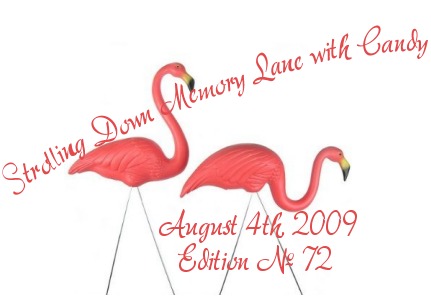
You're not going to have to travel too far this time as we stroll, maybe right to your own front yards!
Many who know me know that my favorite color is pink and my favorite animal is of course the pink flamingo!
While I do have many flamingo items from shoes to ear rings and even martini glasses! However my pride and joy is an authentic pair of Don Featherstone Pink Flamingos!
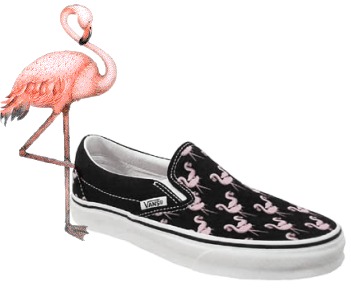
The pink flamingo is one of those objects that people seem to either love or hate. Considered by some to be a work of art and to others to be visual pollution, this one object stands for everything that is good and bad about our modern society.
Lawn ornaments are nothing new. From marble statues created centuries ago to the Granny Fannies of the late 1980’s, lawn decorations have been around for an eternity.
The history of the pink flamingo can be traced back to 1946 when a company called Union Products started manufacturing “Plastics for the Lawn”. Their collection included dogs, ducks, frogs, and even a flamingo. But their products had one problem: They were only two-dimensional.
In 1956, the Leominster, Massachusetts company decided to hire a young designer named Don Featherstone. Although Don was a serious sculptor and classical art student, his first project was to redesign their popular duck into the third dimension. (One must do what they can to pay the bills.) Don used a live duck as his model and after five months of work, the duck was retired to a local park.
His next project would prove to be his most famous. He couldn't get his hands on real flamingos, so he used photographs from a National Geographic in its place. He sculpted the original out of clay, which was then used to make a plaster cast. The plaster cast, in turn, was used to form the molds for the plastic. The original design called for detailed wooden legs, but they proved to be too costly and were replaced by the metal ones still seen today. While the exact date was never recorded, the first pink flamingo was born some time during 1957.
The late 1950’s just happened to be perfect timing for the flamingo. America was moving to the suburbs. Industry was convincing America that a natural lawn was one that was mowed and treated with chemicals. And, every lawn needed a lawn ornament.
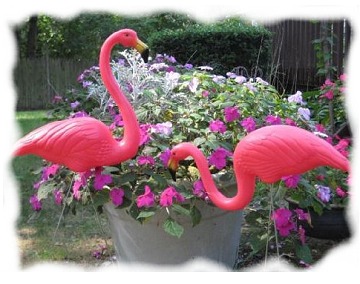
But an empty lawn wasn't the only thing in the flamingo's favor. The country was much more mobile and an increasing number of people were traveling to the many hotels, motels, and lounges named after the flamboyant flamingo. The 1950’s was also a time for bright, bold colors. Common colors had been around for years, but plastics now allowed for hot colors like bright green, vivid ruby, and, of course, hot flamingo pink. Pink refrigerators, washing machines, and (obviously) Cadillacs were highly sought after.
The 1960’s were not as friendly to the pink flamingo. There was a rebellion against everything man made. It was a time to go back to nature. The plastic flamingo quickly became the prototype of bad taste and anti-nature. By 1970, even Sears had removed the pink-feathered bird from its catalog.
It looked like our fake-feathered friend’s days were numbered. But time was on this bird's side. Some people just love to do things that annoy people. You know: If you are not supposed to do something, you do it just to annoy others. If pink flamingos were the ultimate in bad taste, then people were sure to place them on their lawn to bug their neighbors. And they did so in great numbers.
In 1984, Miami Vice kicked the sales of pink flamingos into full throttle. For the first time ever, Union Plastics sold more flamingos than they did ducks.
Some people actually travel with their pink flamingos. The plastic birds go camping, hiking, skiing, and mountain biking. Entire web sites are devoted to the travels of these artificial creatures.
Pink flamingos have also become a prime target of pranksters. Many are stolen off lawns every year, particularly by kids that have been drinking a wee bit too much. Others are kidnapped and held for ransom. One particular pair was kidnapped and had their ransom paid in play money.
We all know that what is art to one person is garbage to the next. Bans have been placed on pink flamingos all over the country. As a result, Union Plastics was forced to introduce a blue flamingo to circumvent the rules. Of course, these communities then changed the laws to ban all plastic flamingos. Idiots! Like this should be their big concern in life with everything else that is going on in the world! (That's when I would paint my house purple.)
I drag all my flamingos back in to storage at the end of summer, makes me sad every time I have to put them away.
Some people dress them up in Santa hats at Christmas or even to celebrate a wedding.
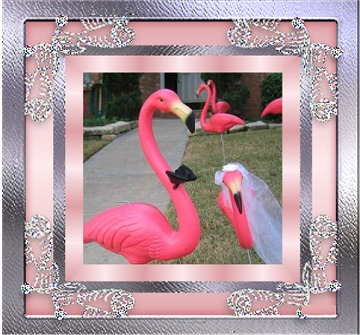
Should you wish to purchase these decorations, they are readily available. Hundreds of thousands are sold each year in stores and through mail order. I got my first ones on a trip to Florida when we stopped at 'South of the Border", someone stole those right out of my yard, but this year I got a brand new pair on Ebay! Authentic flamingos always have Don Featherstone’s signature under their tails. Each has a yellow beak with a black tip and they are only sold in pairs.
There are yard greeting companies that now fill up your yard with a flock of flamingos for birthdays, graduations, etc. It's called "Getting Flocked!" ....I love that!
Also this trend is being used as a fund raiser by schools and teams, they sneak in at night and put the flamingos all over your yard, and you have to pay $5.00 for each one you want to have removed!
What a cute idea!
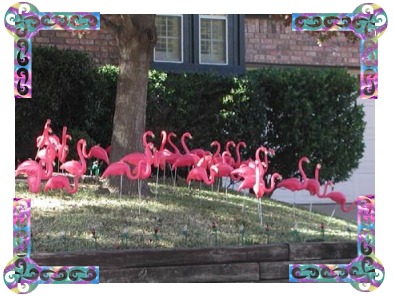
Featherstone never got any royalties for his creation. But he did become a vice president of Union Plastics... and in 1987, he was honored when the company started embossing its flamingos with his signature. "I'm getting my name pressed into the rump of every flamingo that goes out that door," he announced proudly. He even has a book which I just ordered from Amazon!
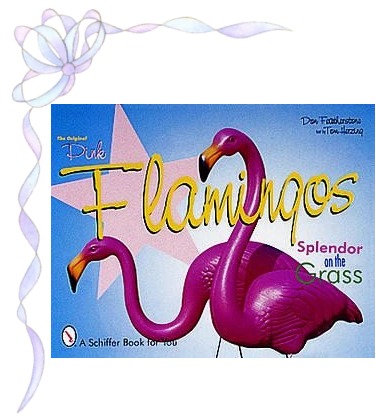
Useless? Useful?
I’ll leave that for you to decide.
Till we meet again............Think Pink!!

Strolling Down Memory Lane with Candy Main Page